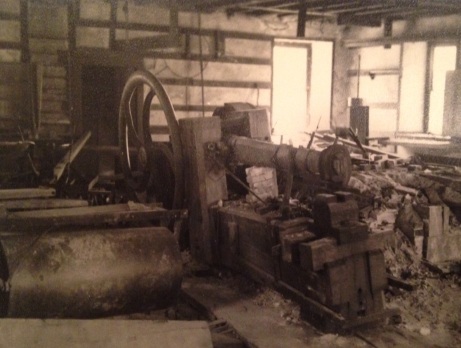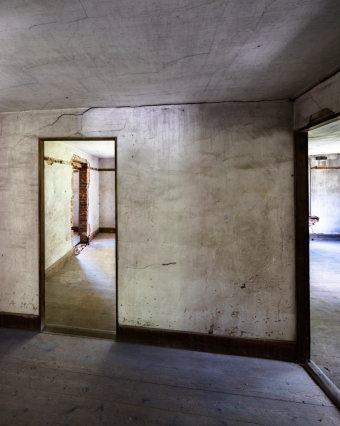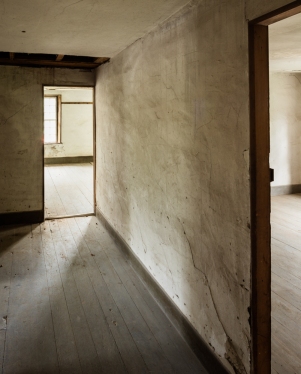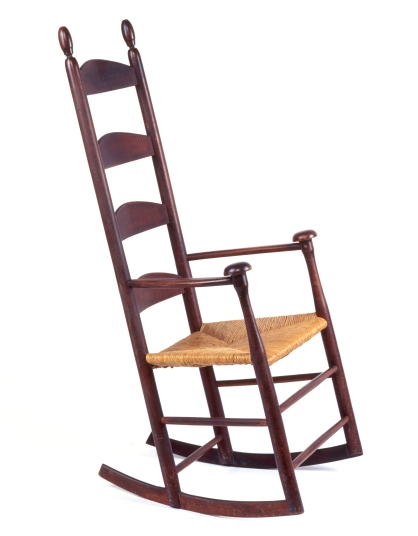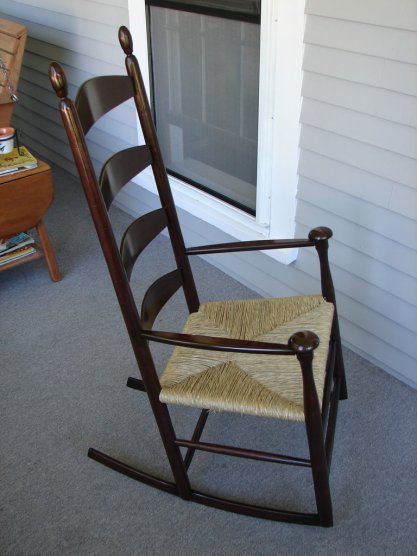
Round Serving Bowl, Union Porcelain Works, Greenpoint, NY, 1886, Shaker Museum | Mount Lebanon, NY: 1961.13237.1
Shaker Museum | Mount Lebanon was recently given a shallow 4 and 7/8’s-inch-diameter bowl made by the Union Porcelain Works (UPW). The bowl is decorated with a green border, small flowers, and the words, “Shakers Mt. Lebanon, N. Y.” These three additions to the Museum’s collection of twenty-eight other pieces of Mount Lebanon porcelain give cause to revisit this subject.
An 1887 entry in a sister’s diary from Mount Lebanon’s Church Family mentions some new dishes bought for the family. She wrote, “We have a set of new dishes on our table [this] morning, marked Shakers, Mt Lebanon, they are pretty and costly we know.” In the early 1950s Shaker Museum Curator Phelps Clawson catalogued the first two piece of this china acquired for the collection. He repeated information believed to have been supplied by a Shaker at Mount Lebanon indicating these dishes had been used initially by the Shakers for daily meals, with later versions sold to visitors as souvenirs. There was speculation in the antiques world that these pieces were made solely as souvenirs since it seemed unlikely that pride-averse Shakers would have found dishes marked with their name suitable. Clawson’s notes, however, are supported by photographic evidence in the Museum’s collection showing pieces of this china on the table in the family’s dining room.
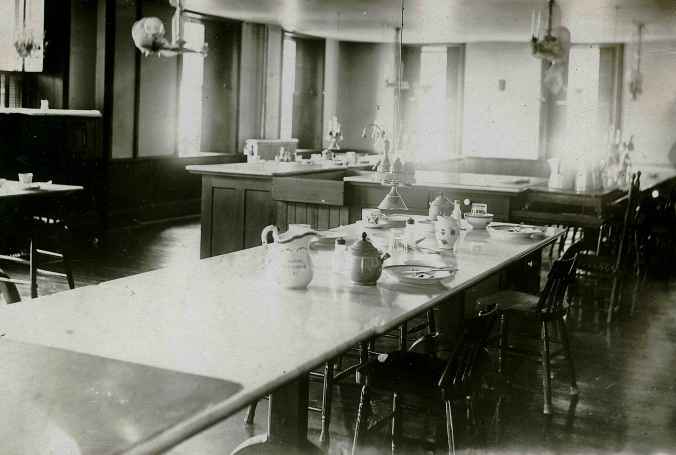
Church Family Dining Room, Mount Lebanon, NY, ca 1900, Shaker Museum | Mount Lebanon, NY: 1960.12527.1
Further examination of Shaker records expanded the sister’s initial comment about the new dishes. Church Family trustee, Brother Benjamin Gates and family deaconesses Sisters Cornelia French and Mary Hazard went to New York City on October 12, 1886 “on business concerning dishes for table use; to be made by Order.” Exercising their duty to see to the domestic concerns of the family, they placed their order for new china with the Union Porcelain Works, once located in the Highpoint (now Greenpoint) section of Brooklyn, New York. The manufacturer of the dishes is clearly identified by the UPW trademark on the bottom of each dish. The trademark on the Mount Lebanon dishes include the numerals “12” and “86” or “1” and “87” indicating that they were made in either December 1886 or January 1887 – a period that fits perfectly between the date the Shakers went to New York and the date the dishes appeared on the family’s table. Only two pieces in the Museum’s collection, two shallow saucers, bear the 1887 date, suggesting that most of the order was completed in 1886, although the Museum’s collection contains most, but not all of the types of dishes made for the Shakers.
UPW began producing hard paste porcelain in the mid-1860s and was the first company in the United State to achieve long-lasting success producing china. Porcelain is made of kaolin, a white clay, and feldspar, a mineral that when heated to a high temperature forms a glassy cement that permanently binds the clay and makes it translucent. In the 19th century only a small number of manufacturers in the United States produced porcelain that compared favorably with European imports.
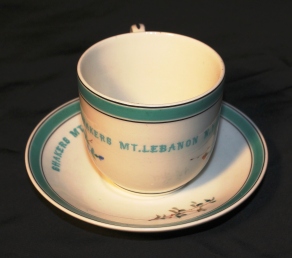
Cup and Caucer, Union Porcelain Works, Greenpoint, NY, 1886, Shaker Museum | Mount Lebanon, NY: 1957.8257.1 (cup), 1950.3985.1 (saucer)
At the 1876 Centennial Exposition in Philadelphia, Charles de Busy, a French member of the International Jury, described the porcelain of Greenpoint (UPW) as “second to none in quality of paste and hardness of glaze.” While some of the pieces were described as “heavy,” de Busy said that “thinner pieces, such as tea and coffee cups, … would figure honorably among the production of Europe.” The pieces in the Museum’s collection bear this out – the serving bowls being heavy and opaque while the cups and their saucers are lighter with a translucence associated with quality porcelain.
To date, no documentation of the cost of the new dishes has been discovered, but an entry in another Shaker sister’s diary suggests that it was not cheap. She wrote, “We have a surprise of great value, on our breakfast table; a set of new dishes. Porcelain ware marked for us Shaker &c. … We hope it may be long ere we need another set.” In the mid-1880s the Church Family at Mount Lebanon had nearly seventy members. Considering that there were probably dinner plates, luncheon plates, bread plates, soup bowls, dessert bowls, and cups and saucers for each member of the family as well as three sizes of oval serving bowls, large round serving bowls, syrup and water pitchers, and relish plates included in the set, the sheer number of pieces could have been well over five-hundred.

Relish Dish and Small Pitcher, Union Porcelain Works, Greenpoint, NY, 1886, Shaker Museum | Mount Lebanon, NY: 1957.8254.1 (relish dish), 1957.8253.1 (small pitcher)
It was originally hypothesized that the variety of decoration grouped themselves into three distinct patterns. Since then it has become clear that the decoration is much less organized. The green border and the words “Shakers Mt. Lebanon, N. Y.” appear to have been done by printed decal-like transfers while the floral and botanic decoration was hand-painted. The transfer decoration was a common offering of Union Porcelain Works as they made large quantities of what they called “thick” and “half-thick” dishes for hotels – usually decorated with a colored band and the name or logo of the hotel. Why the Shakers opted not to stop with this common offering is a mystery. The management of UPW did offer workspace for amateur painters who wanted to be trained in porcelain decorating to come for supervised practice. It may have been that the wide variety in the painted decoration on the Shakers’ dished was a result of having this group of would-be-painters do that work for little extra cost.
We are pleased to hold such a fine representation of dishes used by the Mount Lebanon Shakers and hope that over the years some of the missing forms and some better examples of forms we have will be added to the collection.

